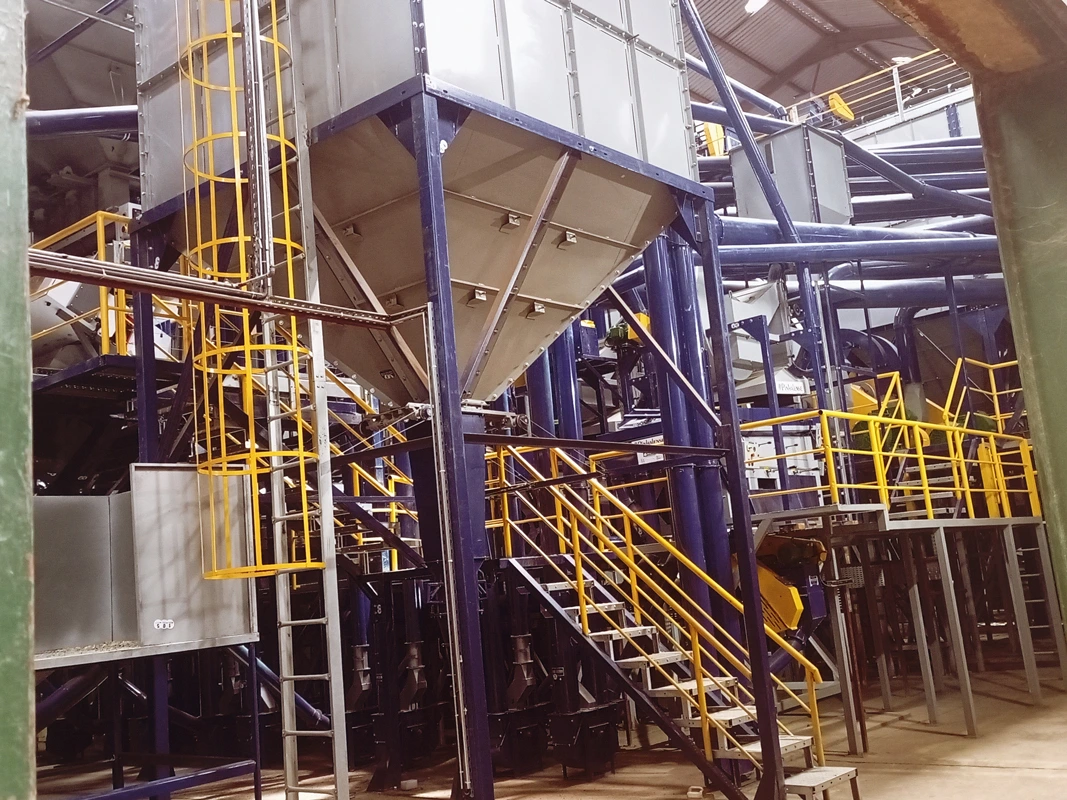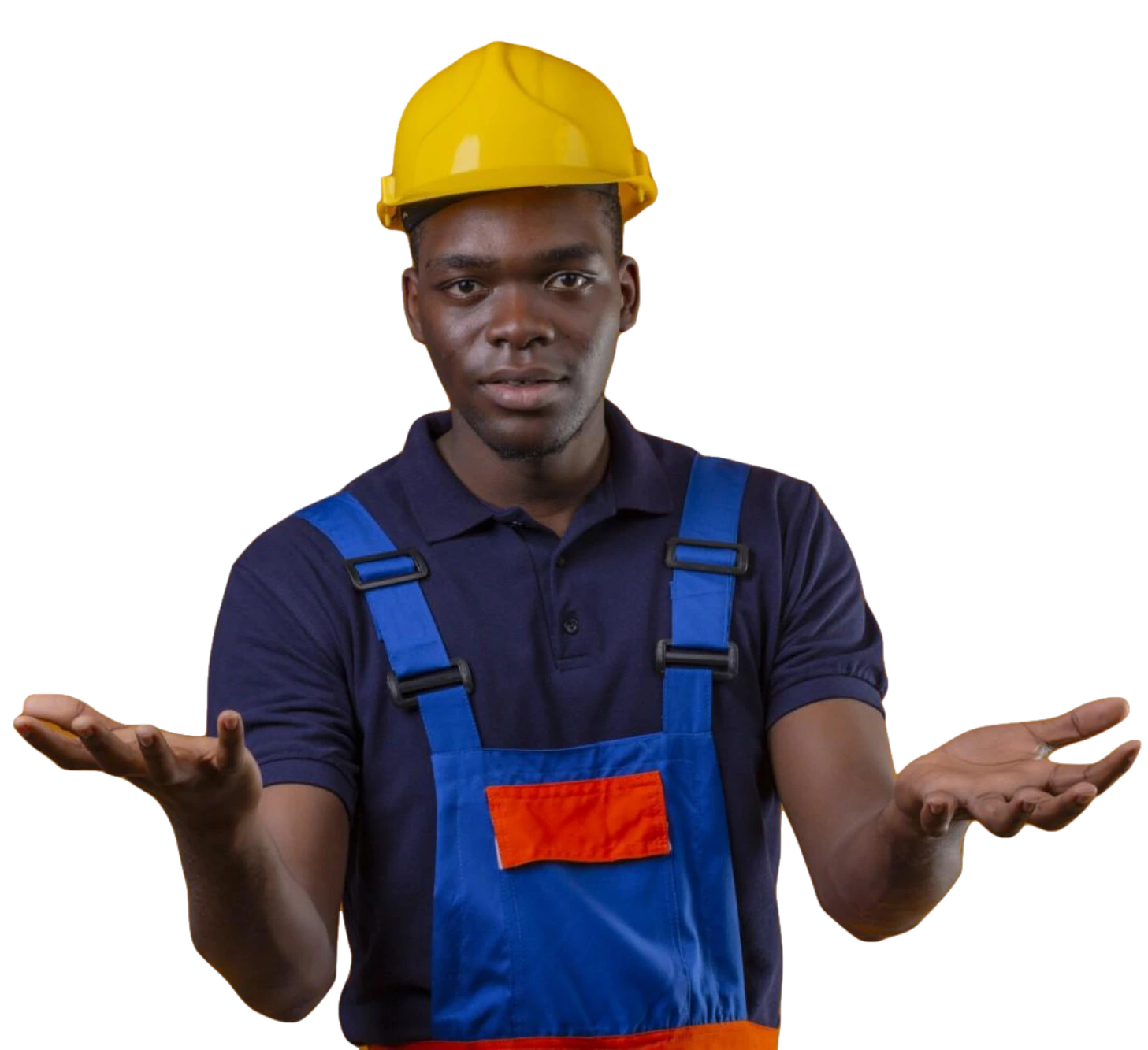Imagine standing next to a washing machine during the spin cycle—that steady hum and slight shake is similar to what machinery vibrations feel like in a coffee processing plant.
Machines like grinders, hullers, graders, pre-cleaners, and destoners are usually the culprits, constantly at work as they process coffee beans. While it might seem harmless at first, over time, these vibrations can lead to serious wear and tear on both the machines and the building, affecting the efficiency of your entire operation.
Causes & Effects of Machinery Vibrations
1. Inadequate Mounting or Foundation
The foundation of a machine is more than just the surface it sits on—it’s the bedrock of its stability. Proper mounting ensures that the machine is securely anchored, while the foundation must be designed to withstand the forces generated during operation. When either the mounting or foundation is inadequate, it becomes a weak link in the entire system, compromising the machine’s stability.
A poorly designed or constructed foundation can lead to significant issues. Imagine a coffee processing machine that’s bolted to a floor that wasn’t engineered to support its weight or absorb its vibrations. Over time, even small vibrations can start to loosen bolts, shift the machine, or crack the foundation. This instability not only leads to increased vibrations but can also affect the overall integrity of the building structure, causing long-term damage.
Inadequate foundations are especially problematic in industrial coffee processing complexes where machines operate continuously and under heavy loads. The repeated vibrations can amplify structural weaknesses, leading to costly repairs or even operational shutdowns.
This is where our specialized expertise comes into play, so read on for our insights in the next sections.
2. Worn Out Parts or Components
Machinery is composed of many moving parts, and with constant use, these parts can wear out. Bearings, belts, and other components can degrade over time, leading to increased friction and vibrations.
Worn-out parts can create excess play or movement within the machine, which translates to vibrations. For instance, if a coffee roasting machine’s bearings are worn, the rotating drum may start to rattle or shake. This not only affects the machine’s performance but can also lead to further damage and increased maintenance costs.
3. Improper Machine Alignment
Proper alignment ensures that all parts of a machine work together in harmony. Misalignment can occur due to installation errors or shifts in the machine over time.
Misalignment can cause uneven stress on machine components, leading to vibrations. Picture a coffee milling machine with misaligned gears; the uneven pressure can cause the machine to vibrate and produce inconsistent results. This misalignment can strain parts, leading to premature wear and potential breakdowns.
4. Unbalanced Load Distribution
Machines often handle heavy or bulk materials. If these materials are not evenly distributed, it can lead to uneven forces and vibrations during operation.
An unbalanced load can make a coffee processing machine shake or vibrate as it tries to handle the uneven distribution. For example, if beans are not evenly distributed in a hopper, the resulting imbalance can cause the machine to vibrate irregularly. This can affect the machine’s performance and lead to operational inefficiencies.
Takeaways
While various factors contribute to machinery vibrations, such as imbalance, wear, and improper load distribution, our primary focus and expertise lie in addressing foundation-related issues. A solid foundation is crucial for minimizing these vibrations and ensuring the longevity and performance of your equipment. In the next section, we’ll delve into common mistakes often made when tackling these foundation-related challenges and how to avoid them, for optimal results.
Common Mistakes
Here are some common mistakes related to machine base foundations that often result in vibrations, as well as errors made when attempting to resolve these issues.
1. Inadequate Foundation Design
Using a one-size-fits-all approach without considering the specific load and vibration requirements of the machinery.
This can lead to insufficient support and an inability to properly absorb vibrations, causing excessive movement and potential damage to the equipment and surrounding structure.
2. Poor Quality of Foundation Materials
Utilizing subpar materials or improper mix ratios during the foundation construction.
Low-quality materials can lead to weak or unstable foundations, which fail to adequately support the machinery and absorb vibrations, resulting in increased wear and tear on equipment.
3. Improper Installation
Neglecting proper alignment and levelling of the machine base during installation.
Misalignment can create uneven load distribution and amplify vibrations, leading to operational inefficiencies and potential damage to both the machinery and the foundation.
4. Inadequate Vibration Isolation
Failing to incorporate appropriate vibration isolation measures, such as rubber pads or shock mounts, into the foundation design.
Without effective isolation, vibrations from the machinery are transferred to the foundation and surrounding structure, leading to increased noise, wear, and potential structural issues.
5. Ignoring Foundation Settlement
Not accounting for potential foundation settlement or changes in ground conditions over time.
Settlement can lead to shifts or tilting of the machine base, causing misalignment and increased vibrations. Regular monitoring and adjustments are necessary to maintain proper alignment and stability.
6. Neglecting Regular Maintenance and Inspections
Overlooking the need for ongoing maintenance and inspections of the machine base foundations.
Without regular checks, minor issues can escalate into major problems, such as cracks, uneven settlement, or deterioration of the foundation, exacerbating vibration issues.
7. Temporary Fixes
Applying short-term solutions like additional padding or temporary supports without addressing the root cause of the foundation issues.
While these fixes may offer immediate relief, they do not resolve the underlying problems, leading to recurring vibrations and potential long-term damage.
8. Incorrect Foundation Repairs
Using inappropriate repair methods or materials that are not suited to the specific type of foundation or vibration issue.
Incorrect repairs can exacerbate the problem, leading to ineffective solutions and continued vibrations.
9. Overlooking Load Changes
Not considering changes in machinery load or operational conditions when making foundation repairs or adjustments.
Failing to account for these changes can result in a foundation that is still inadequate for the new load requirements, leading to ongoing vibration issues.
10. Ignoring Expert Advice
Attempting DIY solutions or relying on unqualified personnel without seeking expert advice on foundation-related issues.
Inadequate expertise can lead to improper diagnosis and ineffective solutions, prolonging vibration problems and potentially causing further damage.
Insights From the Field
Industrial machinery vibrations are more than just a nuisance—they can be a significant threat to the longevity and safety of your equipment. Machines like gravity tables, hullers, graders, and pre-cleaners are the backbone of coffee processing and other grain-based industries, but their operation often leads to vibration issues that can compromise the entire production line. Over the years, we’ve faced and resolved such challenges, gaining a deep understanding of how to effectively manage these vibrations.
One particularly challenging case involved a client who had opted for a raised metallic platform to support their heavy machinery. Despite multiple efforts to stabilize the platform using additional braces, the vibrations persisted. The client’s machinery was supplied by Pinhalense, a company known for its strict vibration tolerance requirements—stricter even than the standard ISO 10816 guidelines. These higher standards are beneficial for machine longevity but also require more innovative solutions to meet them.
After several rounds of testing and adjustments, it became apparent that the metallic platform itself was inadequate for minimizing vibrations. The flexibility of metal under heavy loads was allowing too much movement. We decided to fortify the platform with reinforced concrete frames, a material that offers far greater stability under such conditions. This change drastically reduced the vibrations, bringing them within the acceptable limits set by the machine suppliers. The solution will be the standard for all similar platforms in the facility.
However, it’s essential to recognize that not all vibration issues stem from the foundation or the platform. In another instance, we were called in to investigate excessive vibrations in a facility where everything seemed to be in order. Upon closer inspection, we found that the problem was due to a slight misalignment in the machinery itself. This case highlighted the importance of considering all possible factors when dealing with vibrations—not just the foundations, but also the precise positioning and alignment of the equipment.
The lesson from these experiences is clear: there is no one-size-fits-all solution to machine vibrations. Each scenario requires a thorough understanding of the underlying causes and a tailored approach to address them. Our expertise lies in diagnosing and resolving these foundation-related issues, ensuring that your machinery operates smoothly and safely. Whether it’s rethinking the foundation or addressing other contributing factors, we’re here to help you safeguard your operations and investments against the disruptive effects of vibrations.



